Salvatore Vilella
(De)-Indexing and the Right to be Forgotten
Jan 07, 2025

Abstract:In the digital age, the challenge of forgetfulness has emerged as a significant concern, particularly regarding the management of personal data and its accessibility online. The right to be forgotten (RTBF) allows individuals to request the removal of outdated or harmful information from public access, yet implementing this right poses substantial technical difficulties for search engines. This paper aims to introduce non-experts to the foundational concepts of information retrieval (IR) and de-indexing, which are critical for understanding how search engines can effectively "forget" certain content. We will explore various IR models, including boolean, probabilistic, vector space, and embedding-based approaches, as well as the role of Large Language Models (LLMs) in enhancing data processing capabilities. By providing this overview, we seek to highlight the complexities involved in balancing individual privacy rights with the operational challenges faced by search engines in managing information visibility.
Anomaly detection in cross-country money transfer temporal networks
Nov 24, 2023Abstract:During the last decades, Anti-Financial Crime (AFC) entities and Financial Institutions have put a constantly increasing effort to reduce financial crime and detect fraudulent activities, that are changing and developing in extremely complex ways. We propose an anomaly detection approach based on network analysis to help AFC officers navigating through the high load of information that is typical of AFC data-driven scenarios. By experimenting on a large financial dataset of more than 80M cross-country wire transfers, we leverage on the properties of complex networks to develop a tool for explainable anomaly detection, that can help in identifying outliers that could be engaged in potentially malicious activities according to financial regulations. We identify a set of network centrality measures that provide useful insights on individual nodes; by keeping track of the evolution over time of the centrality-based node rankings, we are able to highlight sudden and unexpected changes in the roles of individual nodes that deserve further attention by AFC officers. Such changes can hardly be noticed by means of current AFC practices, that sometimes can lack a higher-level, global vision of the system. This approach represents a preliminary step in the automation of AFC and AML processes, serving the purpose of facilitating the work of AFC officers by providing them with a top-down view of the picture emerging from financial data.
Writing about COVID-19 vaccines: Emotional profiling unravels how mainstream and alternative press framed AstraZeneca, Pfizer and vaccination campaigns
Jan 19, 2022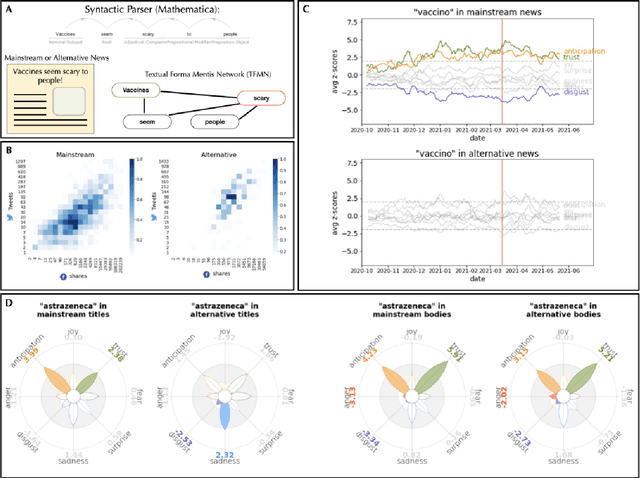
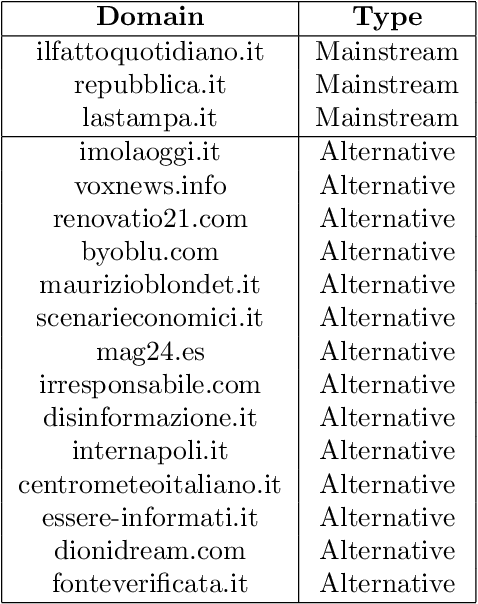
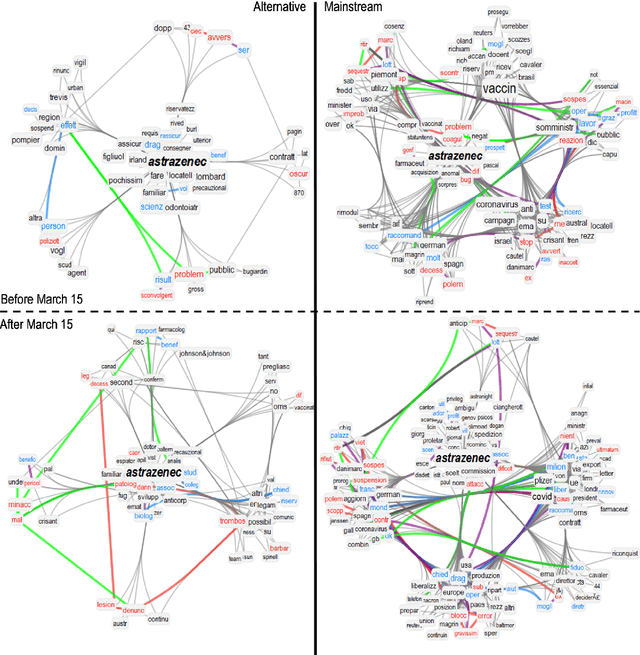
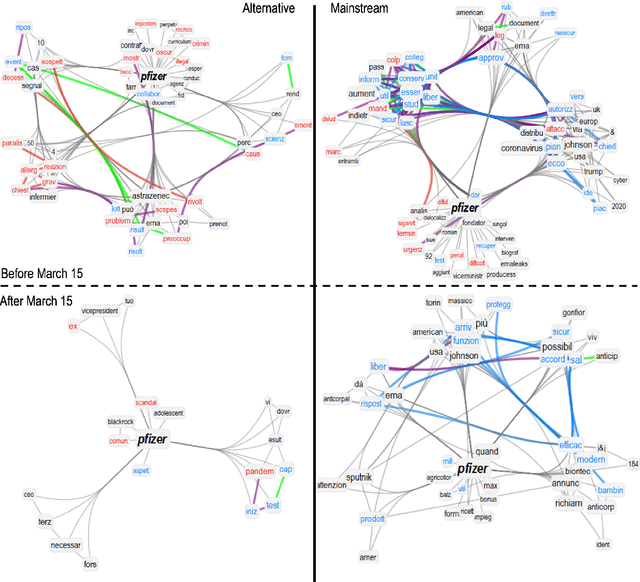
Abstract:Since their announcement in November 2020, COVID-19 vaccines were largely debated by the press and social media. With most studies focusing on COVID-19 disinformation in social media, little attention has been paid to how mainstream news outlets framed COVID-19 narratives compared to alternative sources. To fill this gap, we use cognitive network science and natural language processing to reconstruct time-evolving semantic and emotional frames of 5745 Italian news, that were massively re-shared on Facebook and Twitter, about COVID-19 vaccines. We found consistently high levels of trust/anticipation and less disgust in the way mainstream sources framed the general idea of "vaccine/vaccino". These emotions were crucially missing in the ways alternative sources framed COVID-19 vaccines. More differences were found within specific instances of vaccines. Alternative news included titles framing the AstraZeneca vaccine with strong levels of sadness, absent in mainstream titles. Mainstream news initially framed "Pfizer" along more negative associations with side effects than "AstraZeneca". With the temporary suspension of the latter, on March 15th 2021, we identified a semantic/emotional shift: Even mainstream article titles framed "AstraZeneca" as semantically richer in negative associations with side effects, while "Pfizer" underwent a positive shift in valence, mostly related to its higher efficacy. "Thrombosis" entered the frame of vaccines together with fearful conceptual associations, while "death" underwent an emotional shift, steering towards fear in alternative titles and losing its hopeful connotation in mainstream titles. Our findings expose crucial aspects of the emotional narratives around COVID-19 vaccines adopted by the press, highlighting the need to understand how alternative and mainstream media report vaccination news.
PyPlutchik: visualising and comparing emotion-annotated corpora
Apr 19, 2021
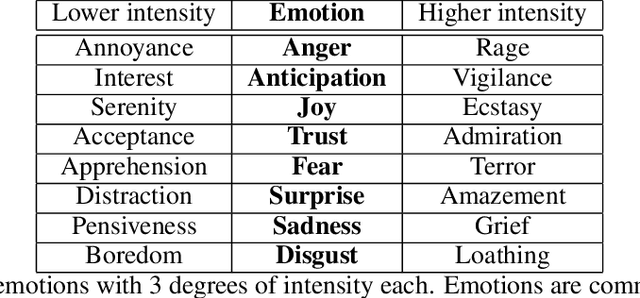
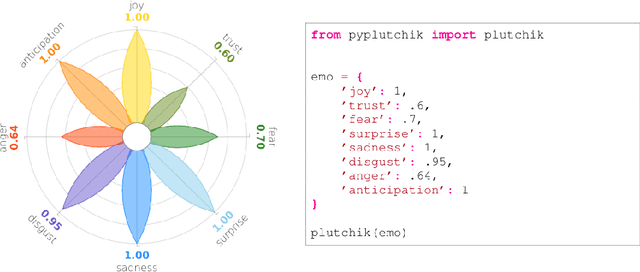
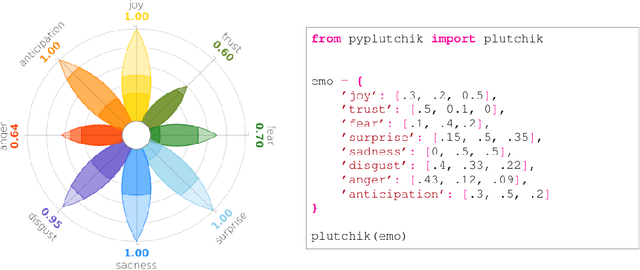
Abstract:The increasing availability of textual corpora and data fetched from social networks is fuelling a huge production of works based on the model proposed by psychologist Robert Plutchik, often referred simply as the ``Plutchik Wheel''. Related researches range from annotation tasks description to emotions detection tools. Visualisation of such emotions is traditionally carried out using the most popular layouts, as bar plots or tables, which are however sub-optimal. The classic representation of the Plutchik's wheel follows the principles of proximity and opposition between pairs of emotions: spatial proximity in this model is also a semantic proximity, as adjacent emotions elicit a complex emotion (a primary dyad) when triggered together; spatial opposition is a semantic opposition as well, as positive emotions are opposite to negative emotions. The most common layouts fail to preserve both features, not to mention the need of visually allowing comparisons between different corpora in a blink of an eye, that is hard with basic design solutions. We introduce PyPlutchik, a Python library specifically designed for the visualisation of Plutchik's emotions in texts or in corpora. PyPlutchik draws the Plutchik's flower with each emotion petal sized after how much that emotion is detected or annotated in the corpus, also representing three degrees of intensity for each of them. Notably, PyPlutchik allows users to display also primary, secondary, tertiary and opposite dyads in a compact, intuitive way. We substantiate our claim that PyPlutchik outperforms other classic visualisations when displaying Plutchik emotions and we showcase a few examples that display our library's most compelling features.
 Add to Chrome
Add to Chrome Add to Firefox
Add to Firefox Add to Edge
Add to Edge